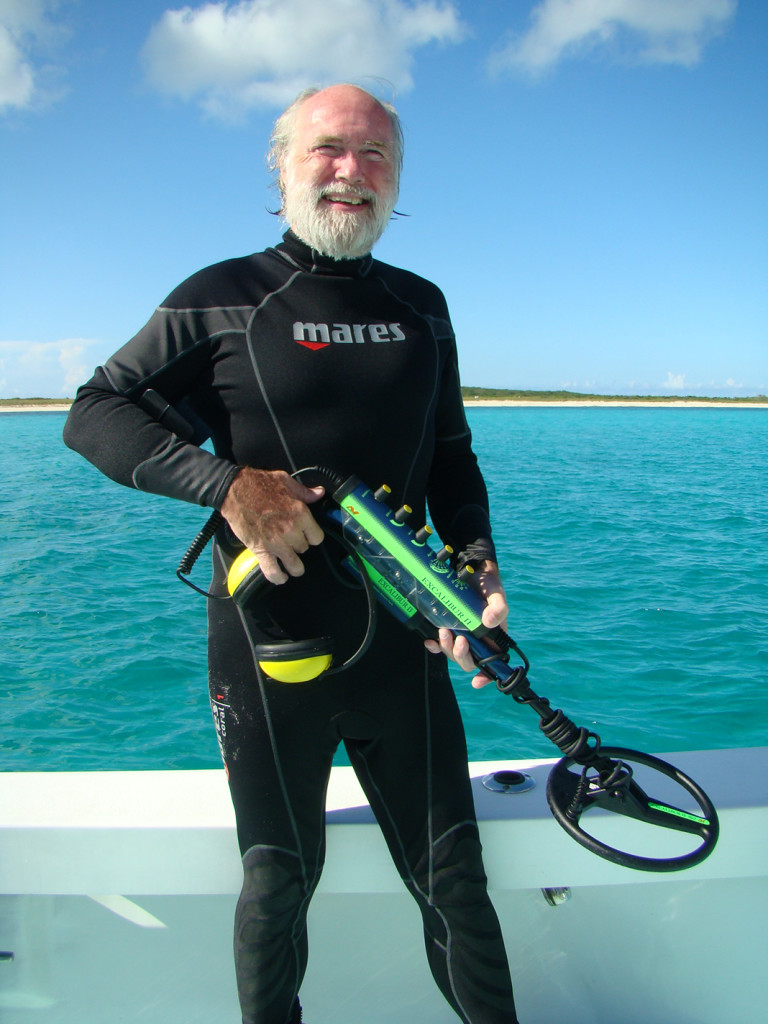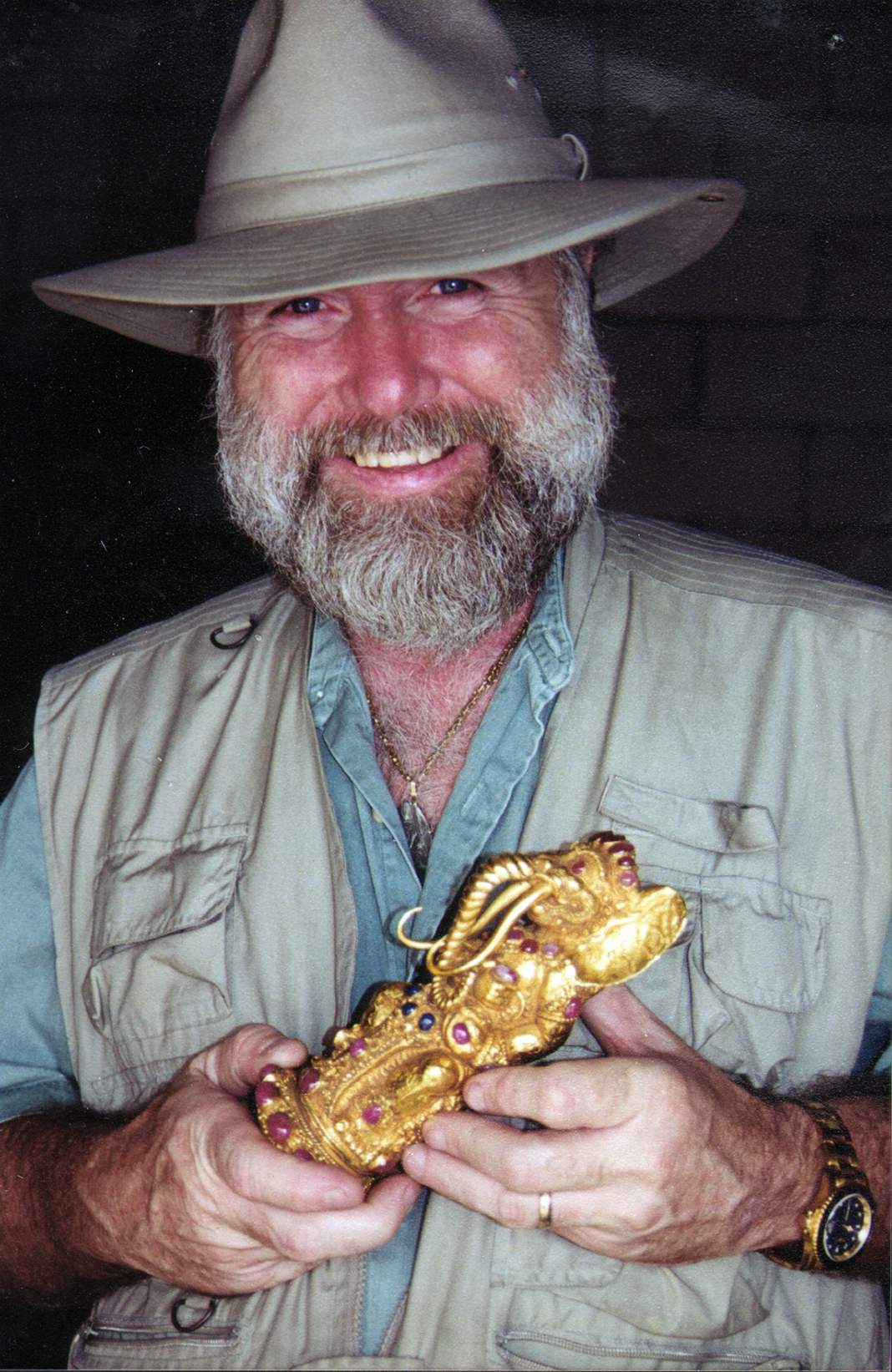Dr E Lee Spence is an avid wreck hunter who has been diving since he was 7 years old and in 1970 he successfully located the wreck of the Huntley, the first ever submarine to sink an enemy vessel.
When and where did you start diving?
My first dives with any sort of SCUBA, were made the year I turned 12. That was in 1959 and the gear almost drowned me as it was entirely my design and home built. But it did allow me to stay underwater longer than I could have held my breath.
Why did you start diving?
My first underwater experience was when I was just 7 years old. A lady had lost her diamond engagement ring at Dellafield Pond at West Point, New York, and I attempted and failed to find it. In those efforts I was using my hands cupped above my eyes and filled with air to act as a dive mask. My father had shown me how to do it and it actually worked. When I was 9 my father gave me two books, “Treasure Island” and “Robinson Crusoe,” which made me dream of shipwrecks, pirates and treasure. Three years later, I read Jacque Cousteau’s “Silent World” and I was hooked forever.

What made you choose to become a dive professional? (if applicable)
I loved reading about history, archaeology and the discoveries being made in the jungles around the world. I thought it would be even more fun to explore the seas and make my own discoveries. I actually found five shipwrecks the year I was 12. At one site, I found over 50 coins from the time of Napoleon (we were living in France). After that, how could I ever have done anything but dive and look for more wrecks?
Which is your favourite dive site and why?
I have lots of favorites, but one would be the wreck of the steamer Regina in Lake Huron. She went down in 1913, taking with her a payroll in gold and a large and valuable cargo. On my first dive to the wreck, I pulled up a bottle of Champagne and two bottles of Scotch. I later headed a State permitted expedition and we recovered cases of Whyte & McKay and Dewarrs Scotch as well as cases of of GH Mumms and Veuve Cliquot Champagne. It gave me my first opportunity to actually drink something that had gone down in a shipwreck, which had been one of my dreams ever since I had read “Robinson Crusoe.”

What has been the most memorable dive of your life and why?
I started to say that is a hard one because there have been so many, but actually its easy. The most memorable was my first dive on the wreck of the Confederate submarine Hunley. In 1864, the Hunley had become the first submarine in the history of the entire world to actually sink an enemy ship, but she was lost as well. The U.S. Navy and private salvors searched for the wreck and failed to find her. She had been lost for 106 years when I discovered her resting place in 1970. She was laying at an angle on her starboard side with only a sliver of her hull barely exposed in the shifting sand. At first I thought it was a natural ledge, but as I looked at it I suddenly realized what it was and, ignoring all safety rules, I went racing to surface, screaming underwater “I’ve found the Hunley! I’ve found the Hunley!” In 1995, at the official request of the South Carolina Hunley Commission, I donated my rights to the wreck to the State and in August of 2000 she was finally raised. Her men were later given a military funeral that was attended by thousands.
If you would come back as a marine life form in your next life, what would that be?
My choice would be a whale, as I believe they are extremely intelligent and they travel the world and can dive thousands of feet to the bottom of the sea. I have no doubt they have seen the wrecks of countless vessels.
Who is your dream dive buddy?
I have been fortunate to dive with most of the greats in my business (shipwreck exploration and salvage), two of those were Mel Fisher and Sir Robert F. “Bob” Marx. When I was 17, I hitchhiked 500 miles each way to meet Bob, who had I had been reading about for at least five years and idolized. Shortly thereafter Bob was diving with me on some of the Civil war blockade runners I had discovered off Charleston. After that, Bob, Mel and I were all working the 1715 treasure fleet together. That was before Mel even thought about going after the Atocha.
What dive locations are on your dream “bucket list” and why?
All the dives on my bucket list are to still undiscovered shipwrecks laden with treasure, so, for obvious reasons, I can’t give you any more information, but why I want to dive on them is obvious. They collectively hold billions in treasure and each has an exciting history and their discovery would be fantastic.
What is on your bedside table right now?
A loaded pistol to greet uninvited guests with.
What is your favourite piece of diving equipment and why?
It would be my OctoMask, because it allows me to wear my GoPro camera and accurately record my dives, which I have never really been able to do before. I wish I had been wearing one the day that I discovered the Hunley (or for that matter any of the hundreds of other wrecks, I have found).
If you were to launch a campaign to raise awareness on a specific issue that affects divers, the oceans or marine life, what issue would you target and why?
It would be to help preserve the archaeology and history of shipwrecks, and to encourage all countries to allow the commercial, archaeological salvage of historic wrecks (except for those that are suitable as underwater museums), as I believe the failure to permit and thus control salvage, actually encourages the unrecorded looting of the wrecks.
Where will you be in 10 years and what will you be doing?
I am 67, but, if my health allows it, I will be researching, finding and salvaging shipwrecks.
Learn more about Dr E Lee Spence at: www.shipwrecks.com/about-spence







